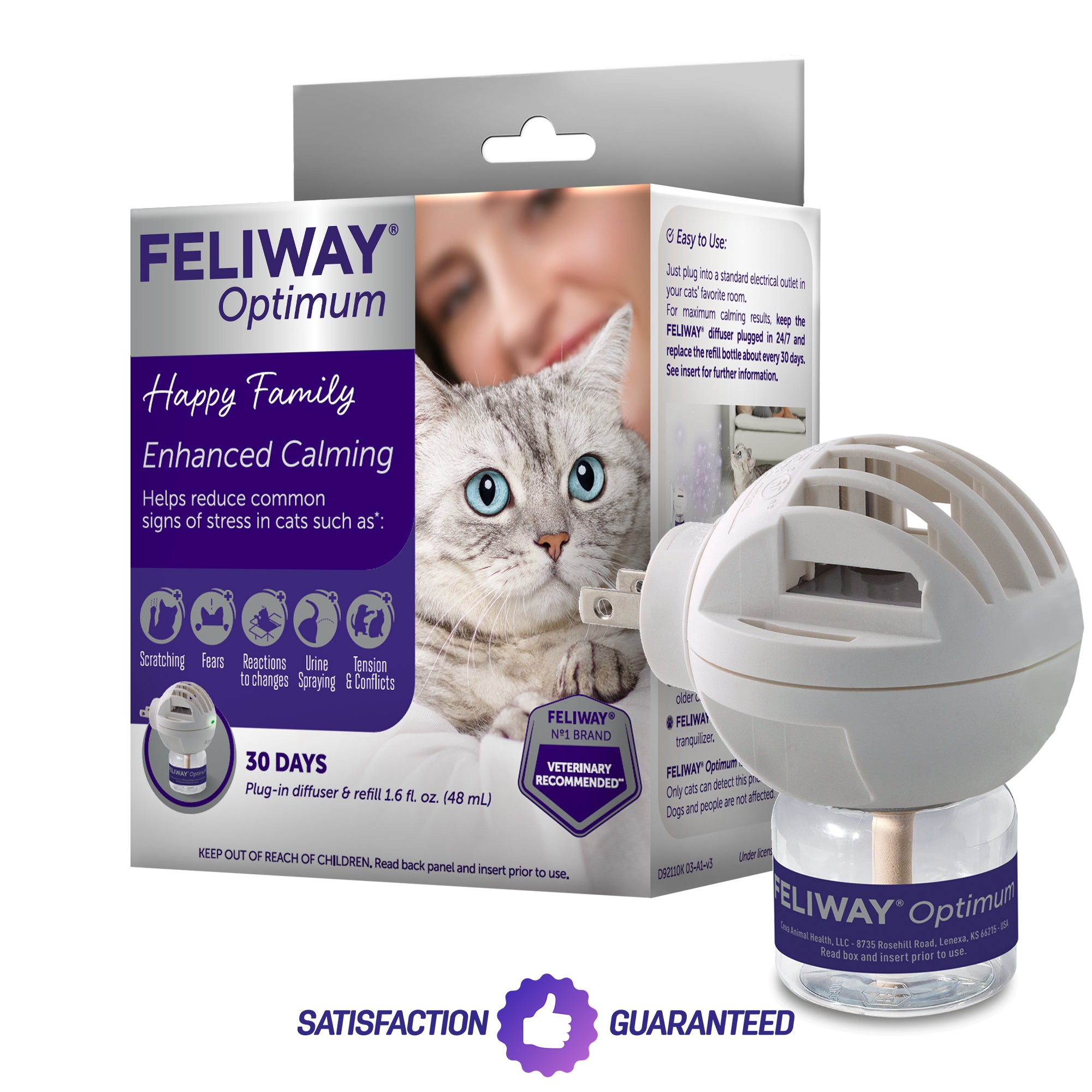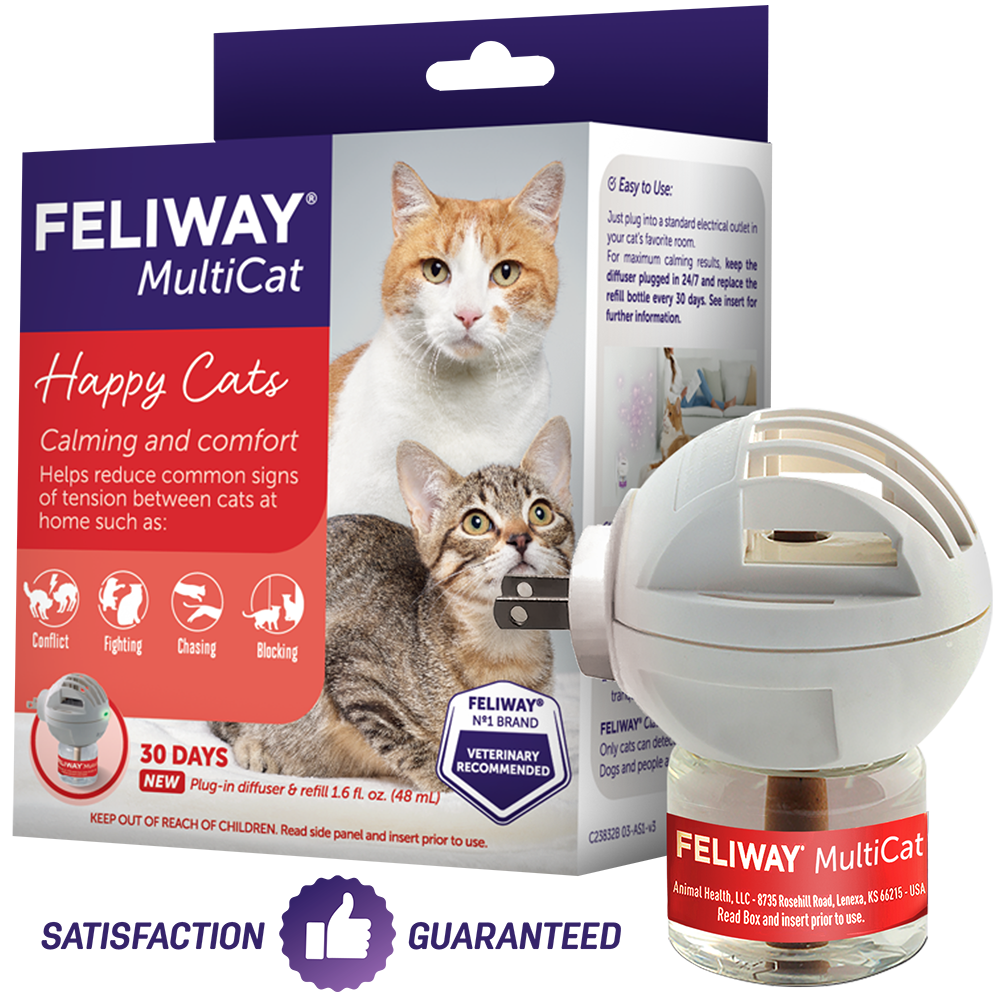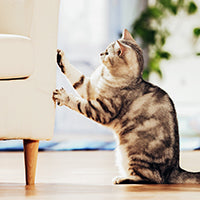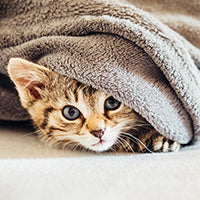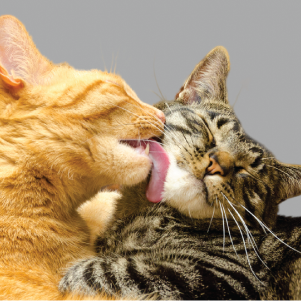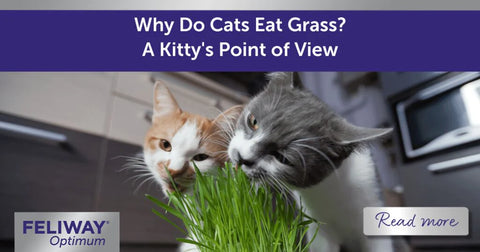
A Cat’s Sense of Touch: A Happy Cat Expert Explains

In today’s society, we often consider our pets family members. We take care of them and look after them intimately. In order to best understand their needs, however, it's important to understand how they communicate with us, as well as how they perceive the world around them.
Have you ever wondered how your cat senses the world around them? This blog is the fourth of a five-part series delving into how cats experience and use each of their five senses.
Exploring How a Cat Senses Touch
Previously, we discussed your cat’s sense of taste. Today, we’ll explore how touch is a very different concept in animals than it is in people. From an academic standpoint, the main components of sensory input are touch, temperature, pressure, and noxious stimuli, as well as helping the brain determine where body parts are in space. Receptors on the skin and in other tissues relay information via nerves and the spinal cord to the brain by way of a specialization nociceptive pathway. This enables an individual to interpret sensations and determine how to respond.
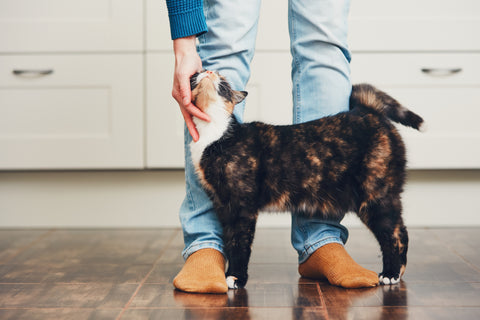
Humans have many touch receptors, and consequently our tactile sense is fine-tuned, especially in our fingertips. Cats have a more generalized touch sensation. Since they do not assess things by picking them up with their paws, they use their mouth to grab and lift. They also combine this sense with input from other cat senses to gather information. In contrast to commonly held assumptions, however, this does not mean that cats do not feel pain.
Vestibular System to Maintain a Cat’s Balance
When I think about cats, I see them as sleek athletes that never fall and are not afraid of heights. They are truly built for performance. The spine is flexible and allows a varying array of movement while the tail acts as a counterbalance to keep the trajectory true. In fact, a cat’s balance is nearly unmatched!
Mammals have a unique system called the vestibular apparatus within the inner depths of their ear canals. These include three semicircular ducts containing a special fluid. It is the coordination of the movement of fluid within these ducts that determines how a cat senses balance.
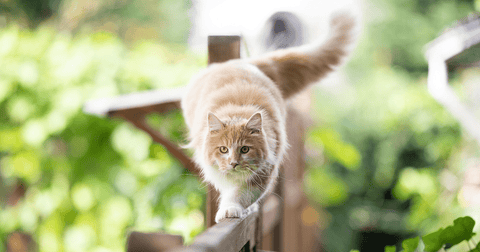
Cat Reflexes and How They Right Themselves
The adage “a cat always lands on its feet” does have some evidence to corroborate it. Due to a cat’s uniquely flexible spine, lack of collar bone, powerful back legs, and vestibular apparatus, a cat can twist its body in mid-air while falling. This enables them to return to a standing posture and land on their feet.
This amazing cat reflex is fully developed by 6 weeks of age and comes in handy for cats living in high rise apartments. A very interesting study done in New York City looked at cats that fell from a specific height and compared the injuries they incurred. The results showed that, for a cat to be able to right themselves and survive, the distance needed to be greater than 12 inches and less than five stories. Many cats in large cities do survive falls and the term High-Rise Syndrome was coined to signify the injuries that were classic to this type of fall.
What Are a Cat’s Whiskers For?
The whiskers on a cat are the special hairs located around the face, particularly below the nostrils and extending outward towards the cheeks. These hairs have special follicles or attachments to the skin that are much more sensitive than other areas. It is this sensitivity that enables cats to experience the world around them.

The information cats receive from their whiskers is so fine-tuned that it can include the strength of breeze created when a mouse runs by, or even the distance and curvature of a wall. This explains how a cat is so expertly able to navigate close spaces. At rest, a cat’s facial whiskers are positioned slightly backward, but when moving or aroused, the whiskers move forward and away from the head to prepare for gathering information.
Cats and their Preferences for Where to Scratch
How a cat senses touch plays an important part in scratching behavior as well. Unwanted scratching is one of the most common complaints that pet parents make to their veterinarian. However, scratching is a normal cat behavior and serves several important purposes. For instance, these include removal of the old nail sheath from the claws, stretching out limb and back muscles, and leaving visual and scent marks on the scratched surface to delineate territorial boundaries.
If your cat’s scratching behavior is proving a problem, try providing good quality scratching alternatives in socially significant areas. This is a great way to direct a cat’s instinctive need to scratch to a more acceptable location. Calming pheromones like FELIWAY Classic have been shown to be helpful as well.

Why Do Cats Groom?
If you have a cat, you have probably stepped on a hairball at least once. Hairballs are the unfortunate fallout of immaculate grooming. In fact, cats spend a large percentage of their daily time budget grooming both themselves and each other. Allogrooming is the term used to describe one cat grooming another cat and is often done to build stronger relationships and reduce tension between individuals.
Even though grooming does not truly involve taste, it does require the tongue. A cat’s tongue has special structural spikes called papillae that help to remove old hair or undercoat as well as parasites like fleas. The pattern in which a cat grooms itself is choreographed like a dance and repeated in the same pattern every time without much variation. It tends to start with the face and then moves to the hindlegs, neck, chest, and tail.
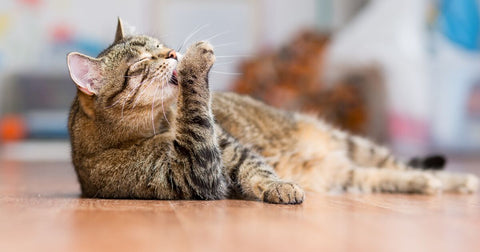
The Difference Between Cats and Humans
The sense of touch as we think about it in humans is markedly different from that in our companion animals. For example, humans utilize very developed touch sensation in the fingertips for sensory input, but cats do not use their paws for the same sensory exploration. Instead, they utilize other specialized techniques such as whiskers and their vestibular system to gain information about their surroundings. This allows them to interact with their environment in a way that’s better suited to a cat’s characteristics.
A cat’s sense of touch is also important in normal, socially important behaviors. For instance, this includes scratching, self-grooming, and allogrooming. It is important to remember that even though cats process touch sensation differently than people do, they still feel pain and experience emotional distress that humans might themselves associate with touch sensation.
Would you like to learn more about how a cat senses the world around them? Check out our other blogs in the series, from exploring a cat’s sense of smell, their unique vision, and more! You can also follow our other Happy Cat Expert articles, as well as stay informed with the latest tips and Q&As about caring for your cat, by signing up to our newsletter.
Bradshaw, J. W. (2012). The behaviour of the domestic cat. Cabi.
De Lahunta, A., Glass, E. N., & Kent, M. (2014). Veterinary Neuroanatomy and Clinical Neurology-E-Book. Elsevier Health Sciences.
Jusufi, A., Zeng, Y., Full, R. J., & Dudley, R. (2011). Aerial righting reflexes in flightless animals.
Integrative and Comparative Biology, Volume 51, Issue 6, December 2011, Pages 937–943
Vnuk, D., Pirkić, B., Maticić, D., Radisić B., Stejskal, M., Babić, Kreszinger M., and N. Lemo. 2004. Feline high-rise syndrome: 119 cases (1998-2011). Journal of Feline Medical Surgery 6(5):305-312.
